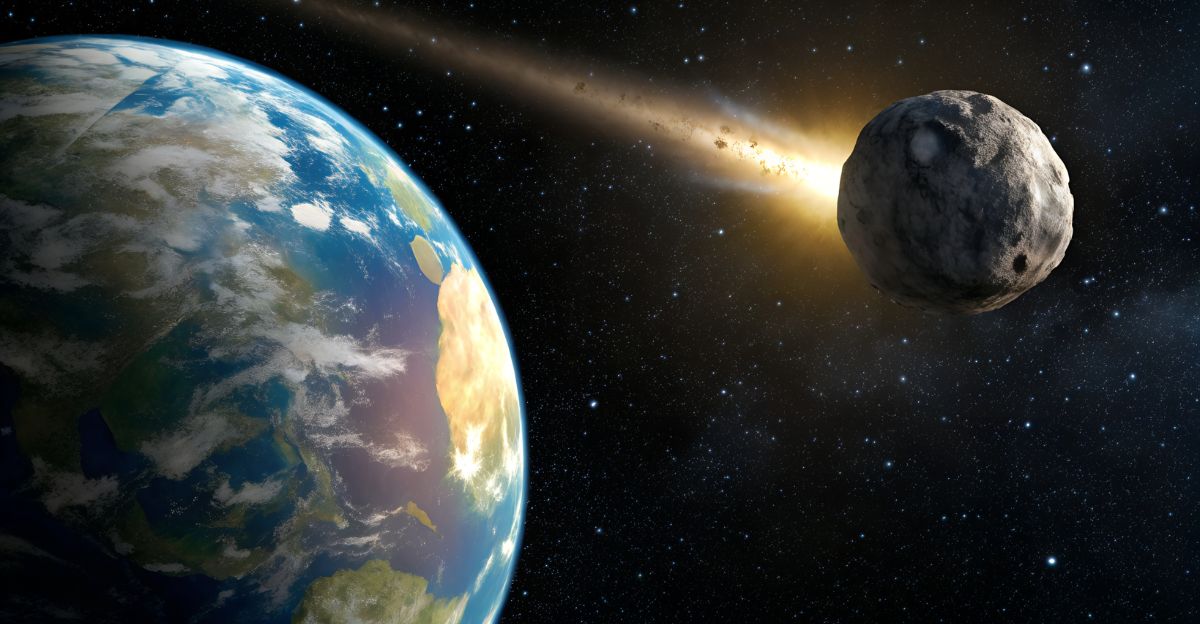
A rare visitor from beyond our solar system streaked across the sky in July 2025, setting off a global scientific scramble and a wave of public speculation. The discovery of 3I/ATLAS, only the third known interstellar object, arrived at a moment of both astronomical excitement and institutional paralysis, as a U.S. government shutdown left NASA unable to communicate with the world.
Discovery Amid Silence

On July 1, 2025, a NASA-funded telescope in Chile detected an object racing toward the inner solar system at over 130,000 miles per hour. Astronomers quickly confirmed its interstellar origin, naming it 3I/ATLAS—following in the footsteps of ‘Oumuamua in 2017 and 2I/Borisov in 2019. The Asteroid Terrestrial-impact Last Alert System (ATLAS) provided the first data, offering scientists a fleeting chance to study material forged around a distant star billions of years ago.
But as 3I/ATLAS approached its most active phase, a 43-day U.S. government shutdown began on October 1, forcing approximately 83-85 percent of NASA’s workforce into furlough. NASA was unable to release observation data or respond to public questions, creating an information vacuum. Meanwhile, the European Space Agency stepped in, publishing detailed Mars orbiter observations that dramatically improved trajectory predictions. With NASA silent, speculation and misinformation flourished across social media.
A Global Effort to Observe
Despite the shutdown, the scientific community mounted an extensive campaign to observe an interstellar visitor. Between July and November, twelve spacecraft and numerous ground-based telescopes tracked 3I/ATLAS. The Hubble Space Telescope captured detailed images on July 21, while the James Webb Space Telescope analyzed the comet’s chemistry in early August. On October 3, the Mars Reconnaissance Orbiter achieved the closest-ever view of an interstellar object, passing within 19 million miles. NASA’s Perseverance rover, Lucy and Psyche missions, and other observatories joined in, providing a wealth of data from multiple vantage points.
Researchers quickly noticed that 3I/ATLAS was no ordinary comet. It accelerated in ways that gravity alone could not explain and contained unusually high levels of carbon dioxide but very little water—unlike typical solar system comets. Early size estimates ranged from 320 meters to 5.6 kilometers, but observations later narrowed the range. The comet’s chemistry suggested it formed around a star with conditions very different from our Sun, offering a rare glimpse into the diversity of planetary systems.
Public Curiosity and Official Response

When the government shutdown ended in mid-November, NASA broke its silence with a press briefing at the Goddard Space Flight Center. Officials shared new images and data, emphasizing the scientific nature of the observations and addressing weeks of pent-up public curiosity. The event was broadcast widely, with NASA leaders underscoring that 3I/ATLAS posed no threat to Earth.
The comet’s closest approach to the Sun occurred on October 29, at a distance of 126 million miles—well outside Earth’s orbit. On December 19, it will pass Earth at 167 million miles, about 700 times farther than the Moon. While visible only through powerful telescopes at faint magnitude, the event has sparked renewed interest in astronomy.
Debate and Misinformation

The vast majority of astronomers agree that 3I/ATLAS is a natural comet from another star system. Its unusual acceleration, scientists explain, is caused by jets of vaporizing carbon dioxide acting like tiny rocket engines as the comet heats up—a process confirmed by radio telescope observations. However, a minority of voices, most notably Harvard astrophysicist Avi Loeb, have suggested the possibility of alien technology, arguing that the acceleration could indicate a “technological signature.” These claims, though rejected by mainstream experts, gained traction online during NASA’s enforced silence.
The shutdown’s information gap allowed false claims to spread rapidly, including rumors of secret crisis meetings and mysterious signal patterns. NASA and the European Space Agency issued denials, but millions had already viewed the misinformation before corrections appeared. The episode highlighted the challenges of scientific communication in an era of instant, viral speculation.
Looking Ahead

As 3I/ATLAS speeds out of the solar system, scientists continue to analyze the unprecedented trove of data collected during its brief visit. The James Webb Space Telescope and Hubble will conduct further observations as the comet fades from view, while international teams contribute additional findings. The episode has raised pressing questions about how space agencies can maintain transparency and counter misinformation during periods of disruption. With next-generation telescopes expected to detect more interstellar visitors in the coming years, the challenge will be not only to study these ancient travelers, but also to ensure that accurate information reaches the public before speculation takes hold.